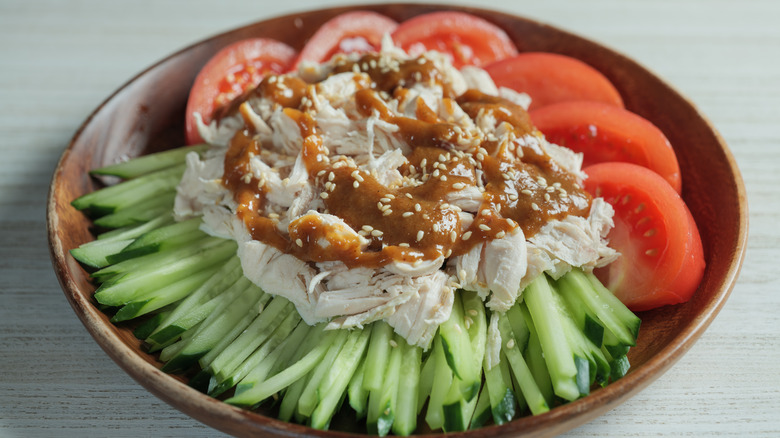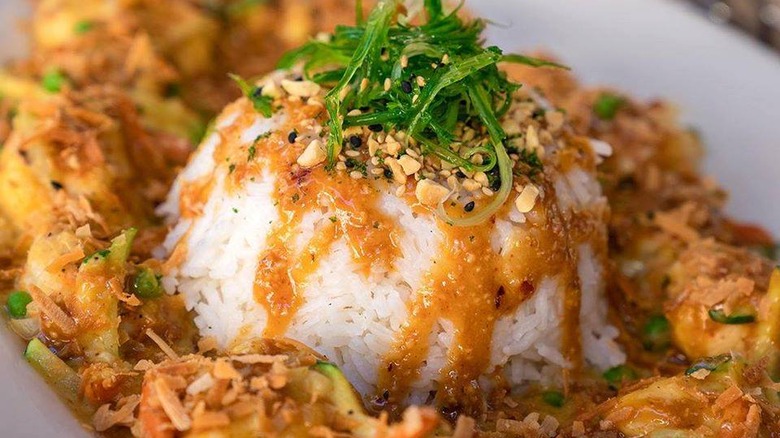How Bang Bang Chicken Got Its Name
Any food with "bang bang" in its name is sure to be super spicy — or so you'd imagine. But names are deceiving and sometimes have nothing to do with flavor or regional origins. For example, take the Welsh Rabbit cheese-and-toast dish with zero rabbit anywhere in sight, or sweetbreads, which are neither sweet nor bread, according to Merriam-Webster.
Bang bang chicken does at least have chicken as its primary ingredient. How it's prepared depends on whether you're going for ages-old authenticity or the modernized version favored by Asian food lovers from Western countries. In America, semi-adventurous eaters likely know bang bang chicken as a favorite menu item at places like The Cheesecake Factory, which includes both chicken and shrimp in the dish. Regardless of the bang bang chicken preparation or cooking method, there's a pretty universal consensus, with few exceptions, on how the current moniker made its way into contemporary culinary vernacular.
Chopping and the sauce
The name "bang bang" in the world of gastronomy unquestionably comes from the Asian continent, or at least the associated dish does. The spicy chicken recipe potentially dates way back and held other names, but most everyone agrees that bàng bàng ji recipes come from authentic Chinese Szechuan cuisine, explains Taste of Asian Food. Language translations can be tricky, but the word "bang" correlates with the Mandarin name pronunciation for a traditional stick or baton used to bash chicken meat for the dish.
In addition to the bashing stick association, Culinary Lore notes how some assume the name refers to the loud banging noise from Szechuan street vendors tenderizing and shredding the chicken with the wooden pounding stick. However, that's debatable since a "banging" noise would unlikely be described that way in the Chinese language. Three Hungry Tummies offers yet another possibility for the moniker, based on "bang" being a Mandarin slang word for "fantastic."
Words are not the only difference between traditional Szechaun bang bang chicken and its Western counterpart. Taste of Asian Food notes the authentic Asian version uses poached chicken created by a "poach, bash, and drizzle" method, while contemporary Americanized renditions showcase deep-fried chicken and a different kind of sauce. Kitchen Sanctuary presents a recipe for bang bang sauce made from sweet chili sauce, mayonnaise, Sriracha, and honey, which contrasts sharply with the Serious Eats traditional sauce created from Sichuan peppercorns, Chinkiang vinegar, roasted chili oil, garlic, and sesame seeds.

